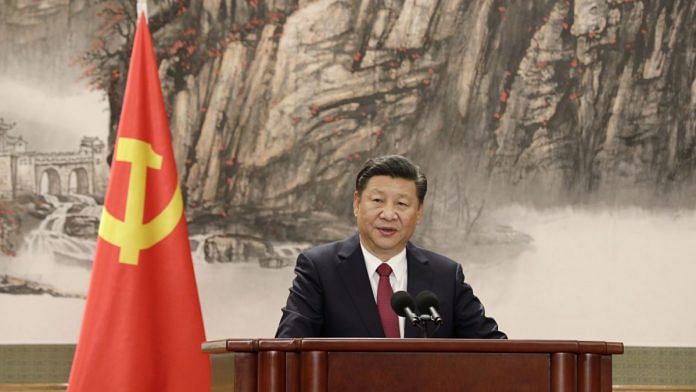Chinese Premier Li Qiang, on 19 July, presided over the groundbreaking of what is set to become the world’s largest hydropower dam, on the so-called ‘Yarlung Zangbo’, as China refers to the Brahmaputra River. Within hours, Chinese online platforms erupted in celebration. A Weibo hashtag marking the occasion—#Construction begins on lower Yarlung Zangbo Hydropower Project—amassed over 73 million views.
Beyond the spectacle of scale, the Chinese online discourse quickly turned the project into a symbol of strategic ascendancy. India, the downstream neighbour, is cast as anxious and reactive. China, in contrast, is portrayed as visionary and unyielding—a master of its geography and architect of a new regional order.
In contemporary geopolitics, infrastructure has become a strategic language of its own, one that Beijing is speaking fluently.
Engineering feat or strategic signal?
The Medog Hydropower Station is projected to cost $167 billion and boasts a planned capacity of 70 to 81 million kilowatts, roughly triple that of the Three Gorges Dam. Once completed, it is expected to generate 300 billion kilowatt-hours annually. The project will take a decade to build, but its signalling to the region, especially India, is immediate.
Hu Xijin, former editor-in-chief of the Global Times, a daily Chinese tabloid, criticised Western media for focusing on India’s ecological and geopolitical concerns while ignoring what he called an “engineering miracle”. For Hu, the dam is not just about electricity; it is also a declaration of China’s ability to tame the Himalayas and reshape geography.
One Chinese commentator claimed that India’s objections stem not from technical concerns, but from its deeply entrenched “security-first” mindset. New Delhi, the commentator argued, has long prioritised control over collaboration, building its own dams while accusing others of weaponising water. “India’s alarmism,” another wrote, “comes from its own guilty conscience.”
China’s dual narrative
Officially, Beijing is presenting the dam as a developmental initiative, aimed at energy security, poverty alleviation, regional integration, and transforming Nyingchi into the “Little Sichuan” or “Jiangnan of Tibet.” Talk of water weaponisation is being brushed aside as paranoia. Commentators invoke “non-zero-sum” logic and portray China as a responsible upstream actor.
But unofficial voices tell a different story.
“India, which tries to control Pakistan with water cuts, now fears China might do the same,” one commentator quipped. Victor Gao, vice president of the Beijing-based Center for China and Globalization, was even more blunt: “If India uses rivers as leverage against Pakistan, it should be prepared for reciprocity.”
These comparisons are not new. Over a decade ago, Ye Hailin, director of Asian Studies at the Chinese Academy of Social Sciences, argued that if India expects restraint from China as an upstream power, it should accept the same standard when Pakistan, downstream of India, makes similar demands.
A more recent commentary on Baidu put it less diplomatically: “Just a month ago, before the official exchange of fire between India and Pakistan, India took the initiative, cutting off water at will, then releasing it, showing little regard for the lives of Pakistani civilians. Faced with a neighbour like India, we [China] must abandon any moral restraint. We should move at our own pace, neither seeking to dominate nor to appease. Stand firm, when necessary, fight when required. Otherwise, we risk being the ones who suffer.”
Also read: India’s ‘triple anxiety’—What Chinese media sees in Jaishankar’s Beijing visit
Water, border, and politics of control
On Chinese social media, the discussion turned openly strategic. One user noted a road built inside the dam tunnels, ostensibly for maintenance, that leads directly to Arunachal Pradesh. “In peacetime, it is for power,” the user wrote. “In wartime? I do not need to spell it out.” This is infrastructure envisioned not just as an economic backbone, but as a military asset, both shield and sword.
This strategic undertone also helps explain Beijing’s long-standing refusal to enter a hydrological data-sharing agreement with India. As Hu Suisheng, senior fellow at the China Institutes of Contemporary International Relations, once noted, such cooperation would implicitly acknowledge India’s border position—especially over Arunachal Pradesh, which China disputes.
Despite the rhetoric of regional uplift and mutual benefit, India’s concerns have been routinely dismissed by the Chinese official narrative and online discourse. There has been no consultation, only unilateral action over a transboundary river system that feeds millions downstream.
Beneath China’s rhetoric of development flows a deeper current, shaped by quiet force and strategic intent. This is not merely the redirection of water but the rewriting of the regional order through determination and power.
For New Delhi, this dam raises alarm. For Beijing, this is advantageous on multiple fronts. Cooperation may be the language used, but the headwaters of the Brahmaputra speak of dominance and unilateral action, not dialogue or mutual benefit.
Sana Hashmi is a fellow at the Taiwan-Asia Exchange Foundation. She tweets @sanahashmi1. Views are personal.
(Edited by Ratan Priya)




